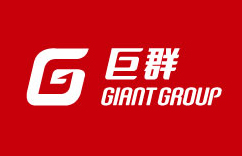【智財評析】美國專利法中電腦實施發明之專利適格性的「兩步測試法」:美國聯邦最高法院Alice v. CLS Bank案評析
2019-07-18 陳志清 律師/專利師(資格)

【重要美國專利案例評析】
美國聯邦最高法院於2014年6月19日由全體法官一致通過作出Alice v. CLS Bank案之判決,確立了美國專利法中電腦實施(computer-implemented)發明之專利適格性(patent-eligibility)的「兩步測試法」流程。因此,之後電腦實施發明的「專利適格性」之判斷皆需要依照此流程,非常值得大家注意!
案件背景事實
1. 本案原告為CLS Bank International et al.(以下簡稱CLS Bank),被告為專利權人Alice Corporation Pty. Ltd.(以下簡稱Alice),CLS Bank於2007年向聯邦地方法院提起確認之訴,指稱四件系爭專利為無效、不可實施、或其並未侵害,而Alice則反訴指稱CLS Bank侵害其專利權。
2. 專利權人Alice的四件系爭專利中之一為‘479專利,係一種藉由電腦實施的與金融交易相關之技術,藉由一第三方中介平台(third-party intermediary)用以降低交易結算時雙方可能產生的交割風險(mitigating “settlement risk”)。申請專利範圍包含有方法項、儲存媒體項(media claim)、以及系統項,其中,系統項與儲存媒體項皆明確地表示需有一電腦、而方法項則經雙方同意也需要藉由一電腦來實施。另外,雙方同意其中最具代表性的為方法項申請專利範圍Claim 33,具有以下四個步驟,簡單地說包含:(a) 建立以及維護一影子帳戶、(b) 取得該帳戶之資料、(c) 調整該帳戶之結餘、以及(d) 發出自動化之指示。
A method of exchanging obligations as between parties, each party holding a credit record and a debit record with an exchange institution, the credit records and debit records for exchange of predetermined obligations, the method comprising the steps of:
(a) creating a shadow credit record and a shadow debit record for each stakeholder party to be held independently by a supervisory institution from the exchange institutions;
(b) obtaining from each exchange institution a start-of-day balance for each shadow credit record and shadow debit record;
(c) for every transaction resulting in an exchange obligation, the supervisory institution adjusting each respective party’s shadow credit record or shadow debit record, allowing only these transactions that do not result in the value of the shadow debit record being less than the value of the shadow credit record at any time, each said adjustment taking place in chronological order, and
(d) at the end-of-day, the supervisory institution instructing on[e] of the exchange institutions to exchange credits or debits to the credit record and debit record of the respective parties in accordance with the adjustments of the said permitted transactions, the credits and debits being irrevocable, time invariant obligations placed on the exchange institutions.
3. 聯邦地方法院於2011年判決認為’479專利的所有系爭申請專利範圍都不具專利適格性,因為其皆指向一「抽象概念」。聯邦巡迴上訴法院之panel decision於2012年雖然推翻了地方法院之見解,但隨後於2013年5月聯邦巡迴上訴法院同意進行全院庭審(en banc)後,又撤銷了先前之panel decision見解、維持地方法院之判決,其中,針對’479專利的方法項及儲存媒體項,10位中有7位法官認為係不具專利適格性,而針對’479專利的系統項,10位中僅有5位法官認為係不具專利適格性。由於諸位法官的意見相當分歧,總共出了7份不同的判決意見書,因此,當案件提出上訴時,聯邦最高法院同意進行審理。(a) creating a shadow credit record and a shadow debit record for each stakeholder party to be held independently by a supervisory institution from the exchange institutions;
(b) obtaining from each exchange institution a start-of-day balance for each shadow credit record and shadow debit record;
(c) for every transaction resulting in an exchange obligation, the supervisory institution adjusting each respective party’s shadow credit record or shadow debit record, allowing only these transactions that do not result in the value of the shadow debit record being less than the value of the shadow credit record at any time, each said adjustment taking place in chronological order, and
(d) at the end-of-day, the supervisory institution instructing on[e] of the exchange institutions to exchange credits or debits to the credit record and debit record of the respective parties in accordance with the adjustments of the said permitted transactions, the credits and debits being irrevocable, time invariant obligations placed on the exchange institutions.
案件爭點
本案件的主要爭點為,究竟Alice的'479專利是否能夠滿足美國專利法之規定,具有專利適格性呢,或是該專利僅為一「抽象概念」而並不具有專利適格性呢?
相關法律規定
1. 美國專利法35 U.S.C. §101所定義的「專利適格性之標的」(subject matter eligible),包含有以下四種標的-方法(process)、機器(machine)、製品(manufacture)、組合物(composition of matter),或再加上其改良(improvement),原文如下:
“Whoever invents or discovers any new and useful process, machine, manufacture, or composition of matter, or any new and useful improvement thereof, may obtain a patent therefor, subject to the conditions and requirements of this title.”
2. 而美國專利法的「法定專利適格標的之例外」(judicially recognized exceptions),並不是規定於法條中,而是由法院以判決所創設的,其中包含有:「自然法則」(laws of nature)、「自然現象」(natural phenomena)、以及「抽象概念」(abstract idea)此三種不予專利之標的。
“We have long held that this provision contains an important implicit exception: Laws of nature, natural phenomena, and abstract ideas are not patentable.” Association for Molecular Pathology v. Myriad Genetics, Inc., 569 U.S. ___, ___, 133 S.Ct. 2107, 2116, 186 L.Ed.2d 124 (2013) (internal quotation marks and brackets omitted).
(Alice Corp. Pty. Ltd. v. CLS Bank Intern., 134 S.Ct. 2347, 2354 (2014).)
3. 然而,有時會藉由上述此三種工具「自然法則」、「自然現象」、及「抽象概念」來達成一發明,因此,不可因為一件發明僅僅涉及了「抽象概念」就讓其不具專利適格性。也就是還需要再進一步判斷的意思。
At the same time, we tread carefully in construing this exclusionary principle lest it swallow all of patent law. Mayo, 566 U.S., at ___, 132 S.Ct., at 1293-1294. At some level, “all inventions . . . embody, use, reflect, rest upon, or apply laws of nature, natural phenomena, or abstract ideas.” Id., at ___, 132 S.Ct., at 1293. Thus, an invention is not rendered ineligible for patent simply because it involves an abstract concept. See Diamond v. Diehr, 450 U.S. 175, 187, 101 S.Ct. 1048, 67 L.Ed.2d 155 (1981). “[A]pplication[s]” of such concepts “‘to a new and useful end,’” we have said, remain eligible for patent protection. Gottschalk v. Benson, 409 U.S. 63, 67, 93 S.Ct. 253, 34 L.Ed.2d 273 (1972).
(Alice, 134 S.Ct., at 2354.)
4. 美國聯邦最高法院於2012年的Mayo案判決中,已經建立了所謂的”Mayo framework”的「兩步測試法」,用以區別一發明究竟是為「自然法則」、「自然現象」、及「抽象概念」、或是其為具有專利適格性之發明。
其中,第一步需先決定系爭申請專利範圍的內容是否會「指向」(directed to)三種不具專利適格性概念中之一種?若是的話,第二步則要搜尋看看是否有「發明構想」(inventive concept)?亦即,必須判斷系爭申請專利範圍中之個別元件、以及由整體觀之,其組合是否具有更多的元件可將其發明之本質「轉換」(transform)為一具有專利適格性之發明,或是說該元件或其組合足以使該發明可「遠遠地超過」(significantly more)於該不具專利適格性之概念本身?當然,若是可以構成的話,就會被判斷為具有專利適格性。
In Mayo Collaborative Services v. Prometheus Laboratories, Inc., 566 U.S. ___, 132 S.Ct. 1289, 182 L.Ed.2d 321 (2012), we set forth a framework for distinguishing patents that claim laws of nature, natural phenomena, and abstract ideas from those that claim patent-eligible applications of those concepts. First, we determine whether the claims at issue are directed to one of those patent-ineligible concepts. Id., at ___, 132 S.Ct., at 1296-1297. If so, we then ask, “[w]hat else is there in the claims before us?” Id., at ___, 132 S.Ct., at 1297. To answer that question, we consider the elements of each claim both individually and “as an ordered combination” to determine whether the additional elements “transform the nature of the claim” into a patent-eligible application. Id., at ___, 132 S.Ct., at 1298, 1297. We have described step two of this analysis as a search for an “‘inventive concept’”—i.e., an element or combination of elements that is “sufficient to ensure that the patent in practice amounts to significantly more than a patent upon the [ineligible concept] itself.” Id., at ___, 132 S.Ct., at 1294.
(Alice, 134 S.Ct., at 2355.)
聯邦最高法院見解
1. 聯邦最高法院同意審理此一上訴案,且維持聯邦巡迴上訴法院全院庭審之多數見解,認為系爭’479專利之「中介交割」(intermediated settlement)發明內容會指向一「抽象概念」,且僅僅藉由「通用性電腦」(generic computer)來實施該發明,並不會將此「抽象概念」就轉換為一具有專利適格性之發明,故結論為系爭’479專利並不具專利適格性。
2. 關於‘479專利中之方法項,聯邦最高法院依據先前判決所建立之”Mayo framework”之「兩步測試法」來進行是否具專利適格性之判斷,之後大家也稱此為「Alice/Mayo兩步測試法」(Alice/Mayo two-part test),我們值得參考聯邦最高法院對本案件所作的實際操作情況:
(1) 第一步是需先決定系爭申請專利範圍的內容是否會「指向」三種不具專利適格性概念中之一種?
聯邦最高法院認為:由於系爭申請專利範圍中所提到的「中介交割」之概念,就如同2010年Bilski案件中所提到財務操作上的「避險」(risk hedging)概念一般,而「中介交割」也沒有與「避險」有任何有意義的區別(no meaningful distinction),因此,這是一種長久以來於商業系統上的基礎經濟操作之概念,故系爭申請專利範圍中的「中介交割」也會指向「抽象概念」。
. . . the claims before us are drawn to the concept of intermediated settlement, i.e., the use of a third party to mitigate settlement risk. Like the risk hedging in Bilski, the concept of intermediated settlement is “‘a fundamental economic practice long prevalent in our system of commerce.’” Ibid. . . . Thus, intermediated settlement, like hedging, is an “abstract idea” beyond the scope of §101.
(Alice, 134 S.Ct., at 2356.)
In any event, we need not labor to delimit the precise contours of the “abstract ideas” category in this case. It is enough to recognize that there is no meaningful distinction between the concept of risk hedging in Bilski and the concept of intermediated settlement at issue here. Both are squarely within the realm of “abstract ideas” as we have used that term.
(Alice, 134 S.Ct., at 2357.)
既然系爭申請專利範圍落入「抽象概念」,故需要再進入第二步測試作更進一步的判斷。
(2) 第二步則是必須判斷是否有「發明構想」?亦即,判斷系爭申請專利範圍中之個別元件、以及由整體觀之,其組合是否具有更多的元件可將其發明之本質「轉換」為一具有專利適格性之發明,或是說該元件或其組合足以使該發明可「遠遠地超過」於該不具專利適格性之概念本身?
聯邦最高法院則是再次檢視先前其他案件進行判斷時之內容,例如參考Benson、Mayo、Flook、以及Diehr等案,認為申請專利範圍內若僅僅是提到使用一「通用性電腦」並不能成功地「轉換」該不具專利適格性之「抽象概念」成為一具有專利適格性之發明。例如描述其使用(apply it)該「通用性電腦」、或是限制其使用在一特定的技術環境(particular technological environment)中,仍然不會使其成為具專利適格性。
These cases demonstrate that the mere recitation of a generic computer cannot transform a patent-ineligible abstract idea into a patent-eligible invention. Stating an abstract idea “while adding the words ‘apply it’” is not enough for patent eligibility. Mayo, supra, at ___, 132 S.Ct., at 1294. Nor is limiting the use of an abstract idea “‘to a particular technological environment.’” Bilski, supra, at 610–611, 130 S.Ct. 3218. Stating an abstract idea while adding the words “apply it with a computer” simply combines those two steps, with the same deficient result. Thus, if a patent’s recitation of a computer amounts to a mere instruction to “implemen[t]” an abstract idea “on . . . a computer,” Mayo, supra, at ___, 132 S.Ct., at 1301, that addition cannot impart patent eligibility.
(Alice, 134 S.Ct., at 2358.)
關於本案,雙方同意於方法項中必須要使用到一電腦以建立電子紀錄、追蹤多筆交易、以及發出同步指令等動作,亦即電腦本身就是個中介。因此,先將方法項中的個別步驟分開來考慮:(a) 建立以及維護一影子帳戶、(b) 取得該帳戶之資料、(c) 調整該帳戶之結餘、以及(d) 發出自動化之指示這四個步驟,皆已經是電腦所為人所熟知的、常規的、及習用的(well-understood, routine, conventional)功能,先前已為業界所知悉。因此,系爭申請專利範圍中之個別步驟並沒有超過實施一「通用性電腦」所能夠得到之功能。
Taking the claim elements separately, the function performed by the computer at each step of the process is “[p]urely conventional.” Mayo, supra, at ___, 132 S.Ct., at 1298 (internal quotation marks omitted). . . . ; all of these computer functions are “well-understood, routine, conventional activit[ies]” previously known to the industry. Mayo, 566 U.S., at ___, 132 S.Ct., at 1294. In short, each step does no more than require a generic computer to perform generic computer functions.
(Alice, 134 S.Ct., at 2358.)
另外,將這些元件組合整體觀之來考慮,系爭申請專利範圍僅僅透過一「通用性電腦」來實施其發明之「中介交割」的概念、也並未改善所使用的電腦本身之功能,故並不足以「轉換」此一「抽象概念」成為一具專利適格性之發明。
Considered “as an ordered combination,” the computer components of petitioner’s method “ad[d] nothing . . . that is not already present when the steps are considered separately.” Id., at ___, 132 S.Ct., at 1298. Viewed as a whole, petitioner’s method claims simply recite the concept of intermediated settlement as performed by a generic computer. See 717 F. 3d, at 1286 (Lourie, J., concurring) (noting that the representative method claim “lacks any express language to define the computer’s participation”). The method claims do not, for example, purport to improve the functioning of the computer itself. See ibid. (“There is no specific or limiting recitation of . . . improved computer technology . . . ”); . . . Instead, the claims at issue amount to “nothing significantly more” than an instruction to apply the abstract idea of intermediated settlement using some unspecified, generic computer. Mayo, 566 U.S., at ___, 132 S.Ct., at 1298. Under our precedents, that is not “enough” to transform an abstract idea into a patent-eligible invention. Id., at ___, 132 S.Ct., at 1297.
(Alice, 134 S.Ct., at 2359-2360.)
因此,最終結論為‘479專利中之方法項,不具專利適格性。
3. 關於‘479專利中之儲存媒體項,由於專利權人亦承認與方法項差不多,故聯邦最高法院將其與方法項得到相同之結論,亦不具專利適格性。
4. 而‘479專利中之系統項,聯邦最高法院認為由於其內所提到藉由該些硬體裝置之實施,並未足以提供有意義的限制條件(meaningful limitation)以超過方法項中的狀況,則系統項與方法項在實質上並無不同,其僅僅是多提到藉由一堆「通用性電腦」之元件來達到相同的概念,故該系統項亦不具專利適格性。
As to its system claims, . . . none of the hardware recited by the system claims “offers a meaningful limitation beyond generally linking ‘the use of the [method] to a particular technological environment,’ that is, implementation via computers.” Id., at 1291 (quoting Bilski, 561 U.S., at 610–611, 130 S.Ct. 3218).
Put another way, the system claims are no different from the method claims in substance. The method claims recite the abstract idea implemented on a generic computer; the system claims recite a handful of generic computer components configured to implement the same idea.
(Alice, 134 S.Ct., at 2360.)
小結
1. 綜上所述,系爭’479專利中之方法項、儲存媒體項、系統項,皆為不具專利適格性。
2. 透過此Alice判決,日後,美國專利中電腦實施發明,如電腦軟體專利、或是商業方法專利的「專利適格性」之判斷,皆需要依照此「Alice/Mayo兩步測試法」流程來進行判斷。
3. 本文章僅初步提供Alice案件的判決內容介紹,其後仍有許多依此「Alice/Mayo兩步測試法」來判斷專利是否具有專利適格性之重要法院判決、以及USPTO於判決後隨即於2014年6月25日發布之「初步審查指示」”Preliminary Examination Instructions in view of the Supreme Court Decision in Alice Corporation Ply. Ltd. v. CLS Bank International, et al.”、之後所修改的M.P.E.P. §2106-Patent Subject Matter Eligibility、局長數次針對專利適格性所發出的Memos、以及最近於2019年1月7日甫生效的Revised Patent Subject Matter Eligibility Guidance對此「Alice/Mayo兩步測試法」進行修改之內容等,還煩請讀者需另行注意!
本文章之專業內容,僅為提供資訊參考,非作為法律諮詢之用,亦純屬作者個人之意見,不代表本所或作者任何曾任職過單位之立場。
相關參考資料
1. 聯邦最高法院:Alice Corp. Pty. Ltd. v. CLS Bank Intern., 134 S.Ct. 2347 (2014) 案判決原文,網址:https://www.supremecourt.gov/opinions/13pdf/13-298_7lh8.pdf(最後瀏覽日期:2019年5月18日)。
2. 「初步審查指示」(”Preliminary Examination Instructions in view of the Supreme Court Decision in Alice Corporation Ply. Ltd. v. CLS Bank International, et al.”),USPTO,2014年6月25日發布,網址:https://www.uspto.gov/sites/default/files/patents/announce/alice_pec_25jun2014.pdf(最後瀏覽日期:2019年5月18日)。
3. M.P.E.P. §2106-”Patent Subject Matter Eligibility”,USPTO,網址:https://www.uspto.gov/web/offices/pac/mpep/s2106.html(最後瀏覽日期:2019年5月18日)。
4. “Revised Patent Subject Matter Eligibility Guidance”,USPTO,2019年1月7日生效,網址:https://www.federalregister.gov/documents/2019/01/07/2018-28282/2019-revised-patent-subject-matter-eligibility-guidance(最後瀏覽日期:2019年5月18日)。
5. 劉致宏 專利代理人,「【智財評析】2019 Revised Patent Subject Matter Eligibility Guidance」,巨群事務所電子報,2019年1月19日,網址:http://www.giant-group.com.tw/law-detail-697.html(最後瀏覽日期:2019年5月18日)。
延伸閱讀:
-
2019-07-18
-
2019-07-18
-
2019-05-21
消息來源:


